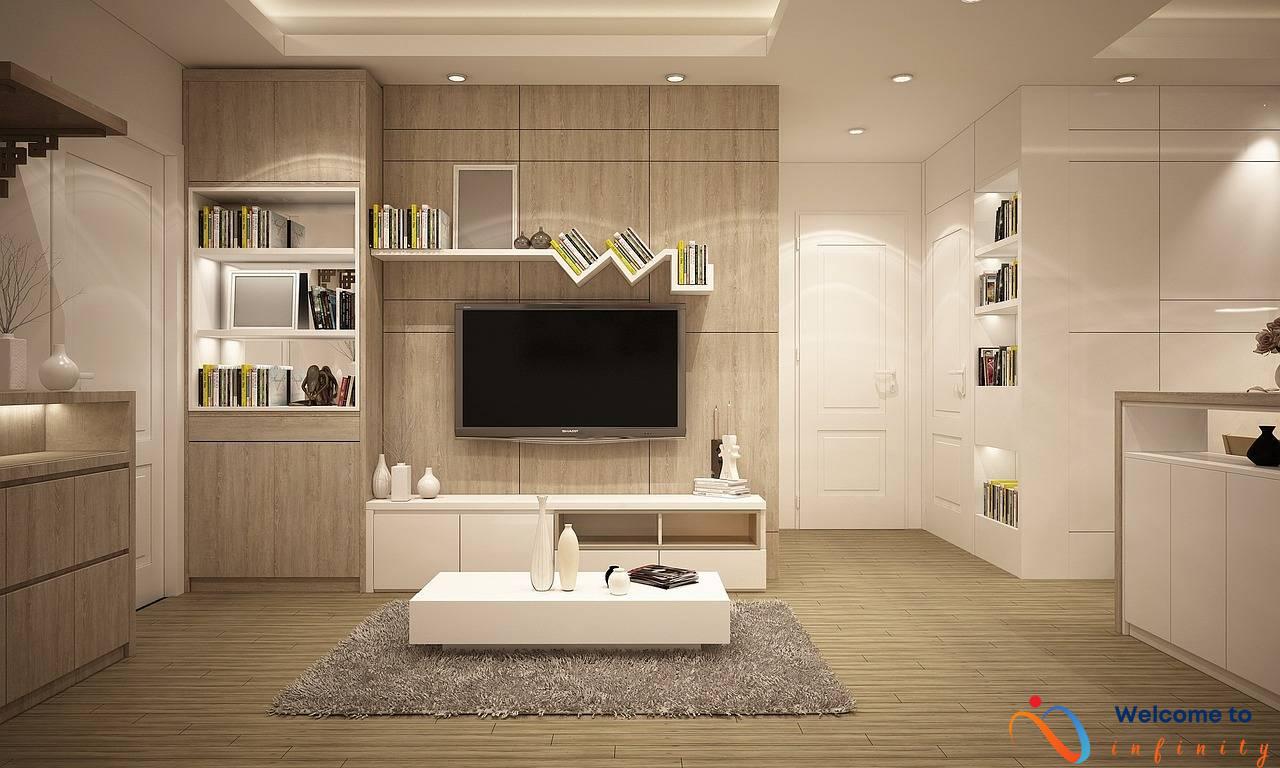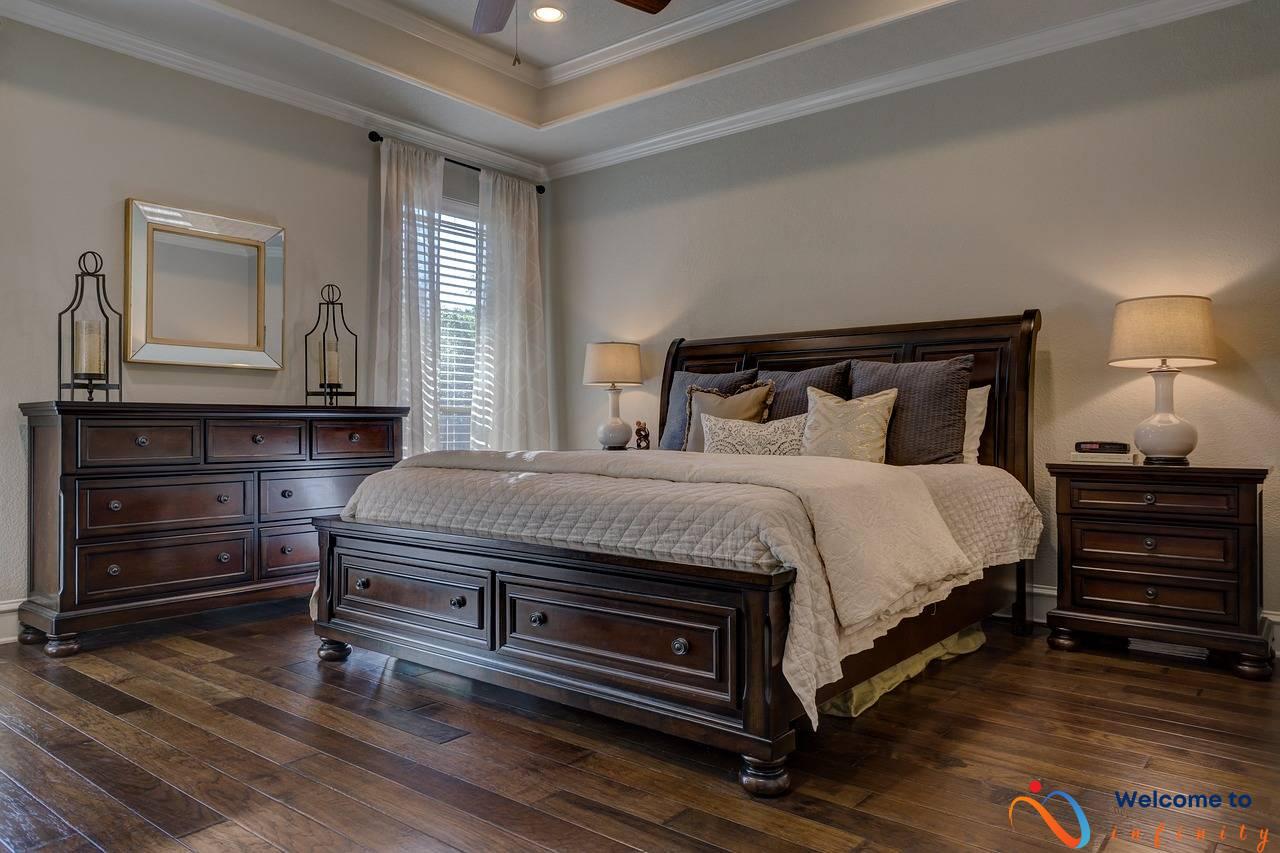If you're tired of your living room looking cluttered and outdated, it's time to consider a minimalist approach to design. Minimalism is all about embracing simplicity, functionality, and visual harmony. It can make any space look modern and inviting by eliminating unnecessary clutter and emphasizing clean lines and neutral colors.
Start by decluttering regularly to make the most of your living space. Incorporate smart storage solutions to keep things organized and out of sight. Choose furniture pieces that prioritize comfort and utility over ornate decorative elements. Sleek, simple designs can go a long way in creating a clean and cohesive look.
A neutral color palette is key in any minimalist living room. White, beige, and gray are classic choices that create a calm and inviting atmosphere. But that doesn't mean your living room has to look boring. You can add personality and visual interest by incorporating accent pieces like a statement rug or wall art.
- Declutter regularly
- Choose sleek, simple furniture pieces
- Embrace a neutral color palette
- Use accent pieces for visual interest
Texture and materials can also play an important role in a minimalist living room. Mixing and matching materials like wood, metal, and natural fibers can create visual and tactile interest. Lighting design is another key element to consider. Layered lighting elements like task lighting, ambient lighting, and accent lighting can create a warm and cozy atmosphere.
Bringing nature into your living room with greenery or natural elements like wood or stone can also help create a sense of calm and balance. Pay attention to balance and proportion in furniture and decor choices to create a visually harmonious space. And don't forget the power of negative space. Leaving plenty of room around furniture and decor elements can create a clear and open visual pathway that feels airy and spacious.
Decluttering Tips
If you're looking to create a minimalist living room, decluttering should be the first step. A cluttered space can make a room feel chaotic and overwhelming. To make the most of your living space, regular decluttering is key. Start by taking inventory of all the items in your living room and getting rid of anything that you no longer need or use. Consider donating or selling these items to free up space and reduce clutter.
In addition to decluttering, incorporating smart storage solutions can also help keep your living room organized and clutter-free. Consider investing in furniture pieces that serve a dual purpose, such as a coffee table with hidden storage or a sofa with built-in storage compartments. Open shelving units can also be a great way to display decorative items while keeping clutter at bay.
Another decluttering tip is to designate a specific spot for everything in your living room. Establishing a “home” for each item can make it easier to keep the space organized and reduce the chances of clutter accumulating in the future. Use storage baskets or organizers to keep smaller items like remote controls or magazines in order and out of sight.
By decluttering regularly and incorporating smart storage solutions, you can make the most of your living room space and create a minimalist oasis that promotes relaxation and calm.
Simple Furniture Choices
Simplicity is key when it comes to minimalist living room design, and that extends to your furniture choices. Opt for sleek and functional pieces that prioritize comfort and utility over ornate decorative elements. Minimalism is all about creating a space that is both visually appealing and highly functional, so choose furniture pieces that serve their purpose without taking up too much visual space.
When selecting furniture, consider its purpose in your living room. Choose pieces that suit your lifestyle and provide comfort and utility while occupying minimal space. A comfortable sofa, coffee table, and a few chairs are all you need to create a functional living room. You can also incorporate smart storage solutions like floating shelves or built-in cabinets to keep clutter under control and maximize your living space.
When it comes to color and material choices, keep it simple and cohesive. Neutral colors like white, beige, or gray work well for a minimalist living room and can be paired with accent pieces for visual interest. Consider incorporating natural materials like wood or metal that add texture and visual interest without overwhelming the space. By focusing on simple furniture choices, you can create a living room that is both functional and aesthetically pleasing.
Neutral Color Palette
A minimalist living room can be stylish and inviting with a neutral color palette. While bold colors can be used as accent pieces, neutrals like white, beige, and gray can create a calming and soothing atmosphere.
Wall colors, as well as textiles and decor, can be kept in a neutral color scheme to create a cohesive and seamless look. While white is a popular choice for walls, adding a subtle hint of beige or gray can add warmth and depth to the room.
Incorporating different textures and materials in neutral colors can also add visual interest to the living room. A wool or shag rug in a light gray can create a cozy atmosphere while a wooden coffee table in a natural finish can add warmth and texture to the space.
| Neutral Colors | Benefits |
|---|---|
| White | Makes the room look spacious and reflects light well |
| Beige | Warm and inviting color that complements other neutrals |
| Gray | A versatile color that can create a cool or warm atmosphere depending on the shade |
By using a neutral color palette, the living room can be transformed into a peaceful oasis where relaxation and comfort take center stage. Plus, a neutral foundation provides a great canvas for displaying art, plants, and other accent pieces that can add a personal touch to the space.
Accent Pieces
When designing a minimalist living room, it's important to remember that minimalism doesn't have to mean boring. Adding a few well-chosen accent pieces can add personality and visual interest to your space without overwhelming the room with clutter. One excellent way to do this is by choosing a statement rug that adds a pop of color or texture to the space without overpowering it. A wall hanging or piece of artwork can also add visual interest and personality to your minimalist living room while still maintaining a sleek and clutter-free aesthetic.
If you're looking for accent pieces that serve a functional purpose, consider adding some unique throw pillows to your sofa or chairs. This can add color and texture to the room while also providing an extra level of comfort for you and your guests. A well-placed plant can also bring life and texture to the space while also providing natural air purification.
When choosing accent pieces for your minimalist living room, try to stick to items that are both functional and beautiful. By doing so, you can make sure that your space is both aesthetically pleasing and practical for your everyday needs. Additionally, keep in mind that less is often more. By choosing just a few carefully curated accent pieces, you can create a space that is both minimalist and visually intriguing.
Texture and Materials
Textures and materials are essential to create a well-designed minimalist living room. It would help if you aimed to incorporate tactile textures and finishes to create depth without detracting from the overall unity of the space. A great way to achieve this is by mixing and matching different materials like wood, metal, and natural fibers.
Wooden floors or furniture pieces made from natural wood add warmth to the living room. On the other hand, metal adds a modern touch. You can also mix soft and hard materials to create a balanced effect. For instance, pairing a plush, neutral-colored sofa with sleek metal tables creates an interesting contrast.
When selecting textures and materials, ensure that you are adhering to the minimalist design principles. Choose high-quality materials that are both functional and durable. Consider incorporating layers of these textures and materials in the living room by adding a cozy rug and a few throw pillows. Additionally, you can create a focal point by adding a statement piece, such as a wooden coffee table or a metal chandelier.
Lighting Design
If you want to create a warm and cozy atmosphere in your living room, then lighting design is an important element to consider. A minimalist living room should have layered lighting, which means adding various lighting elements to create depth and dimension in the space. Here are some tips on how to incorporate layered lighting:
- Task Lighting: Task lighting is focused on a specific area and used for tasks like reading or working on a laptop. Add a floor lamp or table lamp near your seating area for task lighting.
- Ambient Lighting: Ambient lighting is the overall lighting in the room that creates a comfortable and cozy atmosphere. Use dimmer switches or install pendant lights to adjust the brightness of your ambient lighting to create a relaxing atmosphere.
- Accent Lighting: Accent lighting adds visual interest to your living room. Use wall sconces or floor lamps to highlight a piece of artwork or a statement piece of furniture.
By incorporating different lighting elements, you can create depth and dimension in your living room, making it feel warm and inviting. Remember to use a mix of different lighting types to create a balanced lighting design.
Greenery and Natural Elements
Embrace the organic beauty of the natural world by incorporating greenery and natural elements into your minimalist living room. One easy way to bring in natural elements is with potted plants. Choose plants that thrive in low light and require minimal maintenance, such as snake plants, ZZ plants, or pothos.
For those who want to get even more creative with natural elements, consider incorporating wood or stone. Use a natural wood coffee table or a wooden accent wall as a focal point in your living room. Alternatively, add stone accents like a slate fireplace surround or a set of marble coasters.
These natural touches will bring an added warmth to your living room while maintaining a minimalist aesthetic. Just make sure not to overdo it, as too much greenery or natural elements can become cluttered and overwhelming. Remember, the key is to find balance and proportion in your design choices.
Balance and Proportion
When it comes to creating a minimalist living room, balance and proportion are key elements to consider. Achieving a visually balanced and harmonious space can be done by paying attention to proportion and scale in furniture and decor choices.
Firstly, consider the size and scale of your furniture. Choose pieces that are appropriately sized for the room and that don't overpower the space. For example, if you have a small living room, avoid using an oversized sofa that will take up too much space.
Additionally, keep in mind the proportion of your furniture. If you have a large sofa, balance it out with a larger coffee table or accent chair. Similarly, if you have a small sofa, pair it with a smaller coffee table or a pair of armchairs that are similarly sized. By keeping the proportions of your furniture pieces in check, you can create a more harmonious and visually appealing space overall.
Another important consideration when it comes to balance and proportion in minimalist living rooms is the use of negative space. Negative space, or the areas of an interior that are left empty, can be just as important as the objects and furniture pieces that fill the space. By leaving plenty of breathing room around furniture and decor elements, you can create a clear and open visual pathway that allows the eye to rest and the mind to relax.
Lastly, keep in mind that adding just a few carefully chosen decor objects can help create balance and add interest to your space. Consider using a few well-placed accent pieces, like a statement rug or wall art. When choosing these objects, make sure they are in proportion to the rest of the space and don't overpower the room.
The Power of Negative Space
When it comes to creating a minimalist living room, embracing the concept of negative space is key. Negative space, also referred to as white space, is the area around and between furniture and decor elements. By leaving plenty of breathing room around these pieces, you create a clear and open visual pathway that makes the room feel more spacious and less cluttered.
One way to incorporate negative space into your living room is by choosing sleek, simple furniture that doesn't take up too much physical or visual space. Another option is to leave walls bare or create a focal point with a few well-chosen accent pieces rather than cluttering every inch of wall space with artwork or knick-knacks.
But negative space isn't just about leaving things bare. It's also about creating balance and harmony between the elements that are present. By paying attention to the scale and proportion of your furniture and decor choices, you can ensure that each piece has room to breathe and doesn't overwhelm the space.
So next time you're tempted to fill every inch of your living room with furniture, decor, and artwork, remember the power of negative space. By giving your pieces room to breathe and creating a clear visual pathway, you can transform your living room into a calming, clutter-free oasis.












